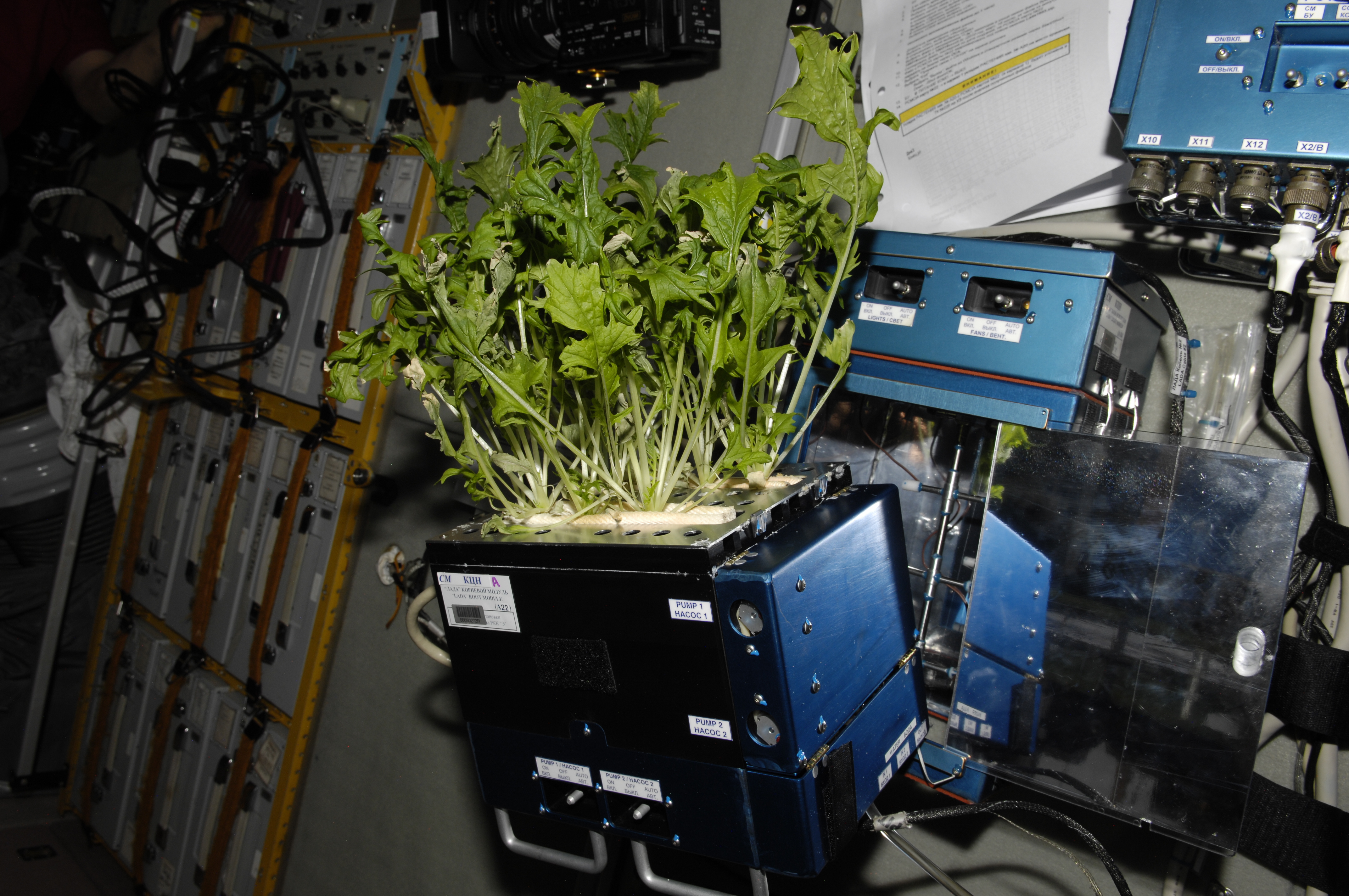
As we venture further into space, and for longer periods of time, the question of how to feed astronauts is becoming more and more important. Astronauts require 5kg of food and water each day, supplies which are currently sent from Earth. But this would be too expensive and unfeasible on long-term missions to Mars for example, so the ideal solution would be to grow and eat vegetables in space.
Plant growth experiments have been conducted by astronauts for decades. The very first organisms in space were specially developed strains of seeds such as maize and cotton which were launched by the USA on captured Nazi V-2 rockets in 1946. In 1971, 500 tree seeds from species such as Sycamore and Douglas fir were flown around the moon aboard Apollo 14.
On their return to Earth, the seeds were planted and grew with no changes to them whatsoever. In 1982, the crew of the Soviet Salyut 7 space station grew Arabidopsis, which were the first plants to flower and produce seeds in space, and in 2010, seeds of Arabidopsis thaliana (Thale cress) were also sent to the International Space Station, where experiments still take place today.
These NASA-funded experiments are studying this species to see how plant roots develop in a weightless environment. It had previously been thought that plant roots grow downwards in a response to the pull of gravity, but the astronauts discovered that their space plants didn’t need gravity at all—the germinating seeds sprouted roots that behaved exactly as they would on Earth, growing away from the seed to seek nutrients. It is suspected that, in the absence of gravity, the plant uses other cues that enable it to direct its roots, such as moisture, nutrients and light-avoidance.
 These findings boost the prospects of growing food plants in space and potentially on other planets. What also must be discovered is whether pollen could affect crew health, and how helping colourful flowering plants to grow could improve crew morale—a serious issue on long-duration missions. The crew of the ISS reported that a sunflower blossomed in 2012, and in January this year, a zinnia blossomed, grown in the space station’s Vegetable Production System, nicknamed ‘Veggie’. The zinnia crops will give valuable insights into the growth of other fruiting crops, such as tomatoes, peppers and strawberries.
These findings boost the prospects of growing food plants in space and potentially on other planets. What also must be discovered is whether pollen could affect crew health, and how helping colourful flowering plants to grow could improve crew morale—a serious issue on long-duration missions. The crew of the ISS reported that a sunflower blossomed in 2012, and in January this year, a zinnia blossomed, grown in the space station’s Vegetable Production System, nicknamed ‘Veggie’. The zinnia crops will give valuable insights into the growth of other fruiting crops, such as tomatoes, peppers and strawberries.
British astronaut Tim Peake is even involving schoolchildren in his quest to discover how microgravity affects the growth mechanisms in rocket seeds. On his return, in a mass experiment appropriately called ‘Rocket Science’, he will distribute seeds that have been in orbit with him to 10,000 schools. Children can then compare the growth of these seeds with that of seeds which have stayed on Earth.
The results could help scientists develop hardier varieties of crops that will grow in space, and take us a step closer to the further exploration of our vast galaxy.
